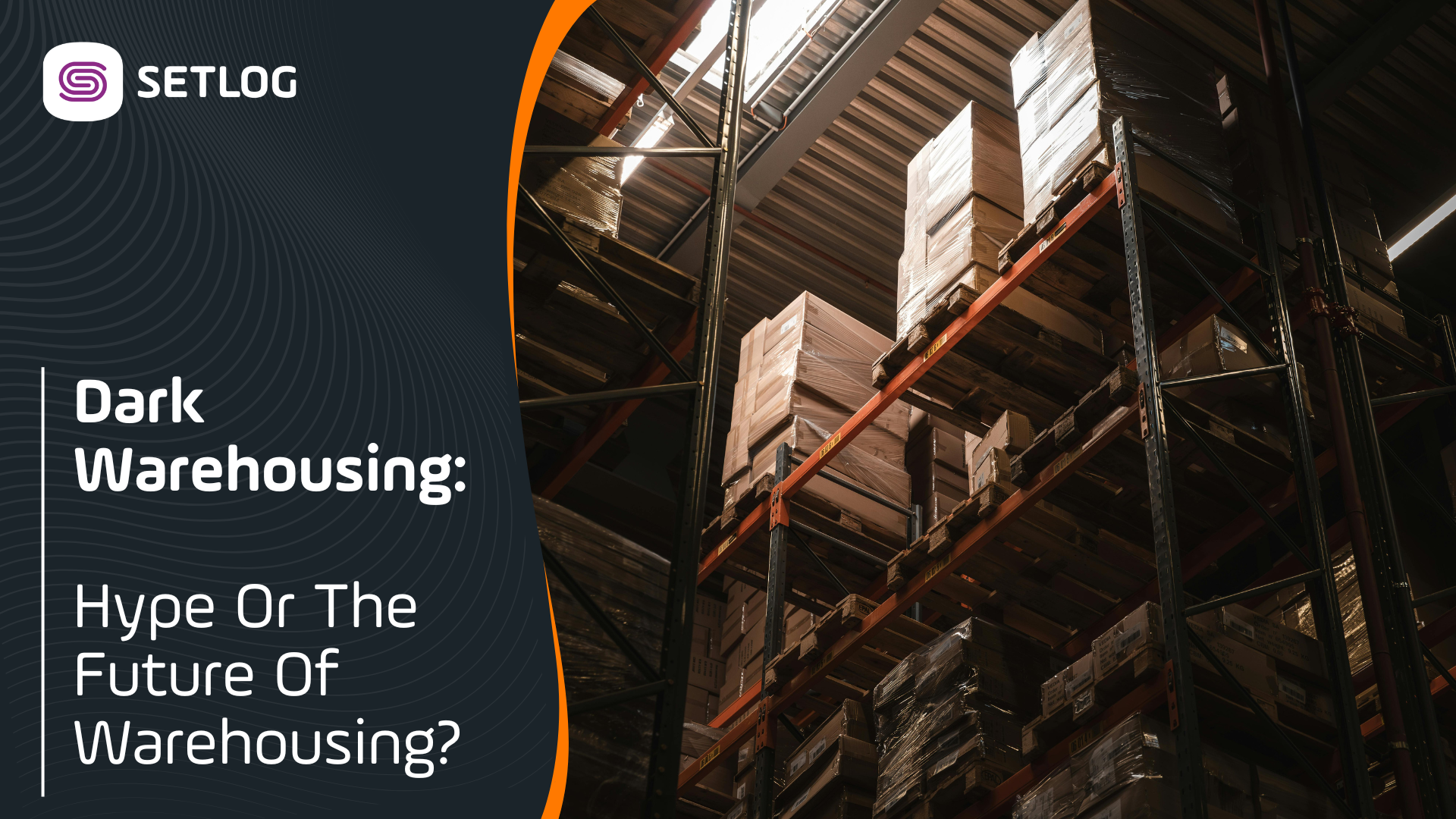The demands for automation and efficiency in warehouse management have never been higher. Especially in times of labor shortages and rising operating costs, the concept of dark warehousing is moving increasingly into the spotlight.
But what exactly is dark warehousing? How feasible are fully automated warehouses in practice? And for whom is such a step worthwhile? This article takes a closer look at dark warehousing concept, outlining its opportunities and limitations, and offers an outlook on which industries and companies could realistically benefit from this developments?
What is Dark Warehousing?
Dark warehousing refers to a warehouse concept in which all processes are fully automated, requiring minimal to no human presence on-site. Every operation, from storage and retrieval to picking and shipping, is carried out entirely by machines and robots. This is where the term “dark warehousing“ comes from – these automated systems can operate without lighting.
Unlike conventional semi-automated warehouses, where humans and technology work together, the dark warehouse takes a more radical approach: the complete replacement of manual labor with autonomous systems. This enables operations to run around the clock – without human staff, without breaks, and without human error.
The technology portfolio required to build such a highly advanced warehouse is accordingly complex. Below is an overview of some of the essential systems:
- Automated Storage and Retrieval Systems (AS/RS) for inventory management
- Autonomous Mobile Robots (AMRs) for in-facility transport
- Robotic arms and conveyor systems for handling and sorting
- Warehouse Management Systems (WMS) and Warehouse Execution Systems (WES) for process control
- Sensor, IoT solutions, and increasingly artificial intelligence for optimization and error detection
Potential and Advantages of a Fully Automated Warehouse
When implemented correctly, dark warehousing can deliver measurable benefits across multiple areas. From efficiency gains to sustainability to improved operational safety.
- Maximum Efficiency and Availability
With fully automated operations, warehouse processes and can run around the clock, without breaks, shift changes or staffing shortages. - Precision and Process Reliability
Automated systems work consistently and with minimal errors. Inventory can be monitored in real time, movements can be tracked seamlessly, and quality as well as compliance requirements are reliably met. - Sustainability and Space Utilization
Eliminating lighting and climate control for personnel reduces energy consumption and lowers the CO₂ footprint. At the same time, narrower aisles and higher racking systems allow for better use of available space.
A Critical Look: Risks and Challengesrausforderungen
While full warehouse automation offers significant opportunities, the concept also comes with substantial challenges. The following points highlight key risks to watch out for during implementation.
- High Investment and Operating Costs
Building a dark warehouse requires substantial upfront investments in robotics, conveyor technology, IT systems, and infrastructure. - Limited Flexibility
Automated systems perform best in standardized processes with clearly defined product structures. Variations, such as custom orders or returns, can cause process interruptions and require manual intervention. - Dependence on Technology
Operating entirely without on-site staff makes warehouse processes heavily dependent on functioning systems. Technical failures or cyberattacks can lead to extended downtime if no trained personnel are available to intervene immediately.
Who Can Realistically Benefit From Dark Warehousing?
Dark warehousing is not a one-size-fits-all concept. It is best suited to industries with a high degree of standardization, where goods have uniform sizes, shapes, and packaging – such as e-commerce, fashion, or pharmaceuticals. In these environments, automated processes can be implemented efficiently.
Equally important is a companies level of digital maturity. Organizations that already operate a robust Warehouse Management System (WMS), IoT sensors, and automated conveyor technology have a clear head start. Seamless integration of warehouse technology, IT systems, and data flows lays the foundation for a fully automated operation.
The transition to a dark warehouse does not have to start from scratch. Many companies adopt a gradual transformation using the so-called brownfield approach, where existing buildings and systems are automated step by step. This approach helps spread investment costs, minimize risks and gradually prepare employees for new processes. It can be particularly attractive for organizations facing acute labor shortages while managing high volumes of goods.
Fazit: Dark Warehousing – Zukunftsvision mit realem Potenzial
Dark warehousing is often described as the next evolutionary stage of warehouse logistics. However, for most companies, it remains a distant goal. While the technological foundations exist and pilot projects prove its potential, widespread implementation is still rare. High investment costs, complex integration requirements, and a lack of standardization in many warehouses currently make fully autonomous operations realistic only for a few pioneers.
The breakthrough will come gradually, not overnight. Successful pilot projects will boost confidence in the technology, while falling costs and more mature systems will lower barriers to entry. Companies that begin automating today using the brownfield approach are laying the groundwork to benefit from dark warehousing in the future. The goal is ambitious, but the trend is clear: warehouse logistics is getting darker – and more efficient.
